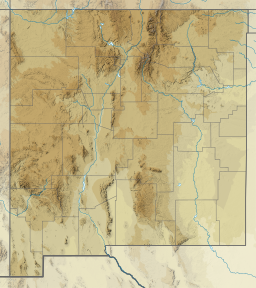Heron Lake (New Mexico)
| Heron Lake | |
|---|---|
| Location | Rio Arriba County, New Mexico |
| Coordinates | 36°41′N 106°41′W / 36.69°N 106.69°W |
| Type | reservoir |
| Basin countries | United States |
| Max. length | 4 mi (6 km) |
| Max. width | 3 mi (5 km) |
| Surface area | 5,900 acres (24 km2) |
| Water volume | 401,000 acre-feet (495,000,000 m3) |
| Surface elevation | 7,186 feet (2,190 m) |

Heron Lake is a reservoir in Rio Arriba County, New Mexico in the southwestern United States. The reservoir is part of the San Juan–Chama Project, which connects the San Juan River in Colorado to the Rio Chama, which is part of the Rio Grande watershed.[1] Lake Heron is 80 miles northwest of Santa Fe.
Water is impounded in Heron Lake by the 1,250-foot (380 m) long, 263-foot (80 m) high Heron Dam, which was completed in 1971. The 5,900-acre (24 km2) lake is approximately 4 miles (6 km) long and 3 miles (5 km) wide, and lies at an elevation of up to 7,186 feet (2,190 m). Heron Dam is owned and operated by the United States Bureau of Reclamation.

The southern shore is the location of Heron Lake State Park, featuring over 200 camping and picnic sites, and two improved boat ramps. The lake is a destination for salmon and trout fishing, as well as for small boat sailing. Boat speeds are restricted by a 'no-wake' policy. A 5.5-mile (8.9 km) hiking trail crosses the Rio Chama Gorge via a pedestrian suspension bridge, and then runs southwest through wooded terrain to the grounds of El Vado Lake State Park.[2]
The lake, dam, and state park are named for Kenneth A. Heron, an engineer in the early 1900s who first explored the concept of diverting water from Colorado to the desert regions of southern New Mexico.[1]
References
[edit]- ^ a b "Heron Lake State Park". Recreation.gov. Retrieved July 2, 2022.
- ^ "Heron Lake State Park". New Mexico Energy, Minerals and Natural Resources Department. Retrieved July 2, 2022.


